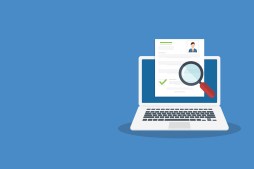The Ultimate Zoom Installation Checklist: Ensure a Smooth Setup
With the rise of remote work and virtual meetings, Zoom has become an essential tool for businesses and individuals alike. Whether you’re a first-time user or looking to upgrade your existing setup, a smooth installation is crucial to ensure seamless communication. To help you through the process, we have compiled the ultimate Zoom installation checklist. Follow these steps to set up Zoom correctly and maximize its features.
Check System Requirements
Before diving into the installation process, it’s important to make sure your system meets the minimum requirements for running Zoom smoothly. Start by checking your computer’s specifications and operating system compatibility. For Windows users, ensure that you have at least Windows 7 or later installed. Mac users should have OS X 10.9 or later.

Next, verify that your computer has sufficient processing power and memory to handle video conferencing software like Zoom without experiencing lag or freezing issues. Ideally, you should have at least a dual-core processor and 4GB of RAM available.
Download and Install Zoom
Once you’ve confirmed that your system meets the requirements, it’s time to download and install Zoom. Visit the official website (zoom.us) and navigate to the “Resources” section where you’ll find the “Download” button.
Click on “Download” and choose either “Zoom Client for Meetings” or “Zoom Rooms,” depending on your needs. The client version is suitable for most users who attend meetings as participants or hosts, while Zoom Rooms is designed for organizations with dedicated conference rooms.
After downloading the installer file, run it and follow the on-screen instructions to complete the installation process. Once installed, launch Zoom from your desktop shortcut or Start menu.
Set Up Your Account
Before using Zoom for meetings or webinars, it’s necessary to create an account if you haven’t done so already. Launching Zoom for the first time will prompt you to sign in or create a new account. Click on “Sign Up Free” to create a basic account using your email address, Google, or Facebook credentials.
Once you’ve entered your details and accepted the terms of service, Zoom will send a confirmation email to verify your account. Open the email and click on the provided link to activate your Zoom account.
After confirming your account, you’ll be prompted to set up your profile. Fill in the necessary information such as your name, organization (if applicable), and profile picture. Take some time to explore the settings and customize them according to your preferences.
Test Your Audio and Video Settings
Before joining or hosting a meeting, it’s crucial to test your audio and video settings to ensure that everything is working properly. Click on the gear icon in the top-right corner of the Zoom app window and select “Settings.” Navigate to the “Audio” and “Video” tabs respectively.
In the “Audio” tab, check if your microphone and speaker are selected correctly from the drop-down menus. Adjust their volume levels if necessary. To test your audio, click on “Test Speaker” and follow the instructions provided.
Next, head over to the “Video” tab. Ensure that your camera is detected by Zoom and selected as the default device. You should see a preview of yourself in real-time if everything is functioning correctly.
To further fine-tune your audio and video settings, consider using an external microphone or webcam for better quality during meetings.
By following this ultimate Zoom installation checklist, you can ensure a smooth setup process without any hiccups along the way. Remember to regularly update Zoom for new features and security enhancements as they become available. Now that you’re all set up with Zoom, enjoy seamless virtual communication with colleagues, clients, friends, and family around the world.
This text was generated using a large language model, and select text has been reviewed and moderated for purposes such as readability.


